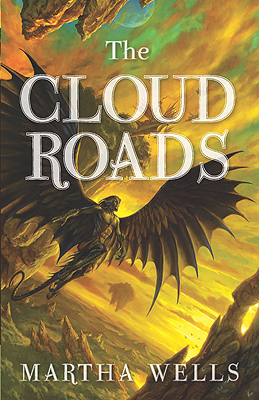The Cloud Roads and The Serpent Sea
January 31st, 2012 There is endless debate on what makes a story science fiction and what makes it fantasy, and I have no intention of entering those dangerous waters, but I am going to dabble my toes in a sheltered inlet and make a few observations about Martha Wells’ Books of the Raksura, represented so far by last year’s The Cloud Roads and the just-released sequel The Serpent Sea. Both are wonderful books, and I’ll be scooping up the third volume when that comes out.
There is endless debate on what makes a story science fiction and what makes it fantasy, and I have no intention of entering those dangerous waters, but I am going to dabble my toes in a sheltered inlet and make a few observations about Martha Wells’ Books of the Raksura, represented so far by last year’s The Cloud Roads and the just-released sequel The Serpent Sea. Both are wonderful books, and I’ll be scooping up the third volume when that comes out.
The protagonist in these books is Moon, a being who can shift between groundling form (basically human) and a rather fierce and dangerous winged being. Moon is an outsider, belonging nowhere, but desperately wanting to belong, though unwilling to admit it. His story unfolds within a fascinating, and incredibly diverse and detailed story world, and his adventures therein are enthralling.
But aside from the great story telling, one aspect of these books that I find very appealing is the way that magic is “built in†to the story elements. For the most part, magic is not something to be learned and mastered, it just is. Magic allows Moon to shape-shift, but not because he’s particularly clever. The magic he uses is simply a biological trait of his species, the Raksura. Just as you and I learned to walk upright at an early age, the Raksura learn to walk upright and also to shape-shift. Almost everything else about them is due to biology, not magic, and Martha has soundly developed that biology—along with the biology and societies of several other species and cultures along the way.
 As another example of built-in magic, there are “flying islands.†Yes, literally. And how utterly logical that a chunk of rock from a flying island could be used to levitate other things.
As another example of built-in magic, there are “flying islands.†Yes, literally. And how utterly logical that a chunk of rock from a flying island could be used to levitate other things.
Which is a long way of saying I admire the logic of these books. In both science fiction and fantasy we’re asked to suspend our disbelief about the plausibility of one or more elements. The Books of the Raksura introduce those elements without the arm-waving and explanation that would be required in a science fiction novel, but the implications of those elements are worked out with great rigor. Having spent the first part of my career writing “hard†science fiction, I truly admire that. In thinking about these books I keep remembering Arthur C. Clarke’s very famous quote: “Any sufficiently advanced technology is indistinguishable from magicâ€â€”and I can’t help wondering if maybe the magic in these books is some highly advanced technology after all.
Posted on: Tuesday, January 31st, 2012 at 6:47 am
Categories: Reading.
Tags: Martha Wells, science in fantasy, The Cloud Roads, The Serpent Sea







